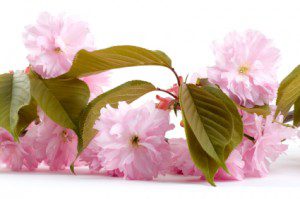I received a recent inquiry from a member of the National Museum of Crime & Punishment in Washington, D.C about posting an article to promote the 98 years of tradition with the annual Cherry Blossom Festival.
My first thought was to decline the invitation because rules are rules and if you’ve been around here for long you know my sentiments on growing vegetables vs. ornamentals. After all, there are plenty of ornamental gardening websites around, however make no mistake; this site is strictly devoted to information on cultivating plants that you can eat.
 But before I could totally dismiss the idea of a cherry blossom article that little voice popped up inside my head and asked; “Are Cherry Blossoms edible?” Hmmm, I didn’t know, but a little research revealed that absolutely, they are edible! More on that later, but first of all here is the guest submisson:
But before I could totally dismiss the idea of a cherry blossom article that little voice popped up inside my head and asked; “Are Cherry Blossoms edible?” Hmmm, I didn’t know, but a little research revealed that absolutely, they are edible! More on that later, but first of all here is the guest submisson:
Cherry Blossom Festival in Washington DC
Washington D.C. is home to the National Cherry Blossom Festival. This is a two-week, annual event that celebrates springtime in Washington, DC as well as the 1912 gift of the cherry blossom trees and the long lasting friendship between the people of the United States and Japan. The festival begins March 27th and runs through April 11th, with a parade on Saturday, April 10th beginning at 10am.
Prior to this intangible peace treaty, 19th century imperialism drew clear lines of separation between these two great nations. Through its strict policy of isolation, Japan remained untouched by western ways until the Treaty of Amity (1854). Although, feelings of mistrust and resentment continued as a result of early U.S. Naval Leaders gunboat diplomacy upon Japan; in order to lessen tensions and restore peace, mutual Cherry and Flowering Dogwood tree offerings were made.
D.C. attractions include multiple festivals, museums, monuments, and more. The National Cherry Blossom Festival coordinates, produces, and supports activities promoting traditional and contemporary arts and culture, natural beauty, the environment, community spirit and youth education. It also begins peak season for an influx of tourists to Washington, brought in by the thousands of historical landmarks, museums, and other buildings.
The National Museum of Crime & Punishment contains excellent depictions of historically famous crime scenes along detailed information concerning past wars, forensics, organized crime, and more. Feel free to stop by our website and get a preview of some of the most notoriously famous crime scenes in U.S. History.
Delicious New Twist on a Familiar Landscape Tree
Now back to the new revelations about cherry blossoms… Growing up in Washington, D.C., I was familiar with the cherry blossom trees and the annual festival but it wasn’t until researching this article that I discovered that these famed flowers are indeed edible.
The website “Just Hungry” featured an article; Of Cherry Blossoms that provides an interesting take on the Japanese culture’s affinity to the changing seasons and cherry blossom trees. Turns out that while they produce no fruit, cherry blossoms do yield a crop of edible flowers and leaves! So this is one plant that I’ll file right beside the Red Bud tree on my list of flowering and edible ornamental trees.
If you visit the Cherry Blossom Festival do so with the knowledge that those blossoms are more than just a pretty face, but don’t even think of sampling one because it should come as no surprise that picking from the national cherry blossoms is completely illegal!


 Address:
Address: EMAIL:
EMAIL: Telephone:
Telephone: